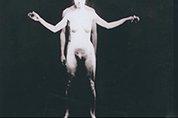A number of classic films that are both famous and infamous for pushing sexual boundaries are being screened as part of “Free to Love: The Cinema of the Sexual Revolution,” through Feb. 15 at International House Philadelphia.
The film series includes appearances and talks by several of the original filmmakers and film historians, examining the political and artistic tumult of the 1960s and ’70s and how the groundbreaking erotic films of that era influenced film culture to this day.
Jesse Pires, the curator for the film series, said he wanted it to present a broad spectrum of ideas from that era.
“It’s hard to define the sexual revolution in a specific way,” Pires said. “There were so many different aspects involved — whether you’re talking about bursts of new feminist arts or artists challenging censorship or mainstream movie culture recognizing the attractiveness of more sexually explicit material. So there are a number of different themes and ideas that are involved in representing what we think of when we talk about the sexual revolution. So I really wanted to have something that was thoughtful and well-rounded on that era.”
A number of LGBT-themed films are featured in the “Free To Love” series, including “Boys in the Sand,” “Pink Narcissus” and “Score.”
“This is a time when being LGBT was considered a mental-health issue,” Pires said of the significance of gay films of that era. “So this is radical stuff in a lot of ways. Hopefully, there’s a good representation of these perspectives as well. I am interested in what we think of as underground and experimental film culture. I appreciated the way that it played with sexual identity. Jack Smith is a great example. He lives this really wild life and the people he surrounded himself with, he was interested in documenting his community. The same can be said about Barbara Hammer. This was a community she was a part of and she wanted to make important work for this community. So that was something I was interested in representing. There are other films in the series that also touch on LGBT issues.”
For erotic film buffs of a certain age range, this series will feel nostalgic.
But for people who weren’t around at that time, the series is a peek into an era when films of an adult nature couldn’t be found via computer or a trip to the local video store.
“Young people may be surprised that some of this stuff was so popular and widely available and sought-out by a large swath of the population,” Pires said. “Now we have the Internet and it’s a lot easier to explore whatever sexual interest you may have. But at this time, if you were interested in explicit material, it wasn’t a mouse-click away. There was a time when people celebrated this erotic culture. Hopefully it would be a shock in a good way.”
Granted, what is considered shocking by 1960s standards might not raise nearly as many eyebrows in 2014.
But Pires assured us that these films still have the ability to arouse or scandalize the sensibilities of audiences today.
“I think that there’s a certain section of the population that would look at these as tame and relics of a bygone era when you hold them up against what is accessible nowadays,” Pires said. “But I do think because a lot of these films involved court cases and were banned in this country or other countries, there is still a considerable amount of controversy that surrounds them. People are still sensitive to the idea of explicit films.”
International House Philadelphia presents “Free To Love: The Cinema of the Sexual Revolution” through Feb. 15 at Ibrahim Theater, 3701 Chestnut St. For more information or tickets, call 215-387-5125 or visit www.ihousephilly.org/calendar.
